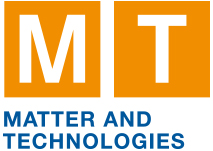Speaker
Description
The quality of electron beams generated by laser–wakefield accelerators (LWFAs) has advanced to the point where they can drive novel light sources such as free-electron lasers (FELs), as demonstrated at several facilities. However, electron beam fluctuations remain a major challenge, driven by the nonlinear dynamics of injection, cavity formation, and laser propagation. These challenges become even more severe when targeting FELs with higher brightness and shorter wavelengths.
We present an in-depth simulation study in which we reconstruct an experimental LWFA setup using self-truncated ionization injection (STII) as the injection mechanism. Realistic three-dimensional particle-in-cell (PIC) simulations with PIConGPU, combined with the automated workflow engine Snakemake, enable a systematic exploration of the parameter space. Based on this reconstruction, we generate a multidimensional map linking electron beam properties to laser and plasma parameters. From this analysis, we derive requirements for laser and plasma configurations to achieve a controlled onset and truncation of the injection process. In addition, we investigate the impact of laser dispersion and focusing on the spectral and longitudinal charge distribution in the STII regime.
| Speed talk: | Normal speed talk selection |
|---|

